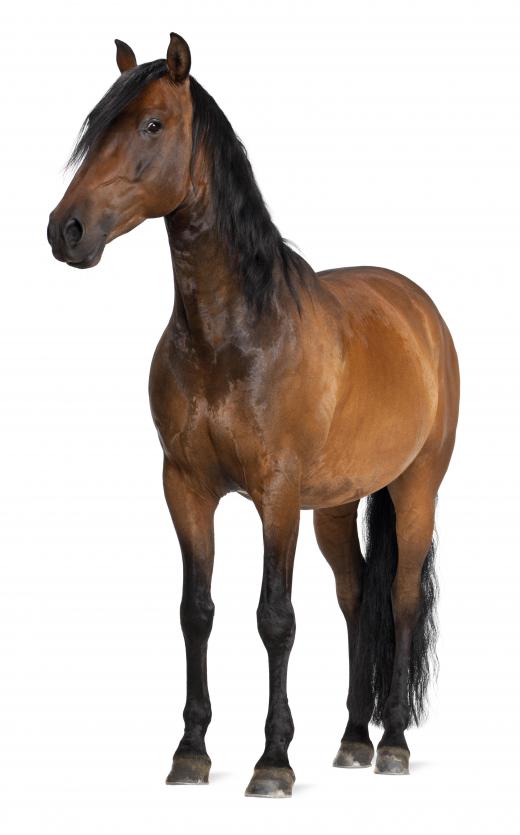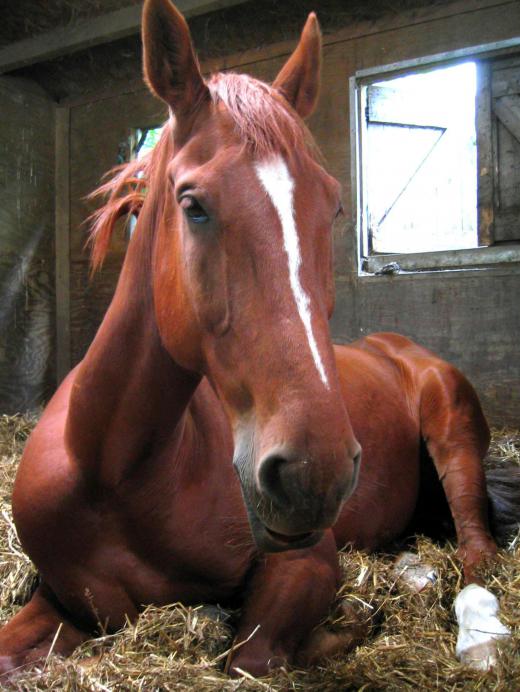At Sports&Hobbies, we're committed to delivering accurate, trustworthy information. Our expert-authored content is rigorously fact-checked and sourced from credible authorities. Discover how we uphold the highest standards in providing you with reliable knowledge.
How do I Take my Horse's Temperature?
Your horse's temperature is considered one of his most important vital signs, because it indicates some disturbance in his overall health. It can be elevated for a variety of reasons and by itself is no cause for alarm.
When your horse is excited, in pain, diseased, just finished exercising, in a hot, humid climate or simply young, his temperature may be elevated. Therefore a two degree increase alone is not a cause for concern and may only need to be monitored. However, a four degree increase in your horse's temperature would require further investigation.

It is important to establish a normal average for your horse before a crisis arises. It is best to monitor your horse's temperature for several days, and then once a week to get a good solid average. This exercise will also desensitize your horse from any concerns while having his temperature taken. It is advisable to always make any medical examination a comfortable, bonding experience for both you and your horse.

Taking your horse's temperature is a simple procedure. The horse should stand tied or be held by an assistant. It is preferable to use a veterinary thermometer since it is designed to accommodate a long string and clip to be tied to the end. Also, when taking a horse's temperature, a mercury thermometer is more accurate than a digital one as it will be necessary to insert the thermometer further into the rectum than the instructions indicate for a digital.

Prepare by shaking the thermometer below 95° F (35° C). Next lightly lubricate the thermometer with room temperature petroleum jelly. It is important to not use too much petroleum jelly as it will insulate your thermometer and you will get an incorrect reading.
Stand to the side of your horse's rump, facing his tail. Grasp the dock of his tail and move it to the side. Do not pull his tail by its hairs. Gently insert the thermometer into his anus at a slight upward angle. Next lightly attach the clip to his tail hairs and begin your timing. During your two to three minute wait, it is best to stand with your horse to assure him and keep him comfortable. Once the required cooking time is completed, remove the thermometer gently and take your reading. Upon completion, be sure to clean your thermometer with alcohol before returning it to its case.
For an adult horse at rest, a normal temperature range is between 99.5 degrees Fahrenheit (37.5 degrees Celsius) and 101° F (38° C). If his temperature is higher than 104° F (40° C), proceed with your investigation and alert your veterinarian. Another indication of a horse's elevated temperature would be cold or patchy sweating.
If your horse's temperature is elevated significantly, it would be good to check his other vital signs such as pulse and respiration, so you can give your veterinarian a thorough report for his evaluation.
AS FEATURED ON:
AS FEATURED ON:













Discussion Comments
Instead of using petroleum jelly to take horse's temperature, you can use a water based lubricant. This type of lubricant is not oily, and is less likely to distort your horse's temperature reading. It is also easier to use and easier to clean up after you are finished.
When taking a horse's temperature, it is a good idea to comfort him first. Chances are that if you are taking a horse's temperature, he is already not feeling his best and may be stressing due to an illness. Some horses also get nervous if they sense something is not right, or when people are behind them.
Talking to your horse, petting him, and even offering him one of his favorite treats will help to put him at ease before you take his temperature. It also will help if your horse if familiar with the person who will be helping you with this task.
As you begin the process of taking his temperature, keep talking to him. This will comfort him by letting him know that you are still there with him.
Post your comments